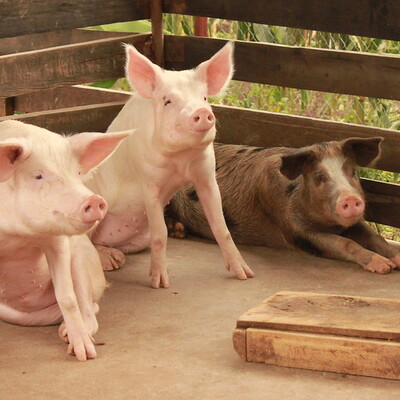
Q fever common in Tana River and Garissa counties: New study reveals
Coxiella burnetii, the bacterium that causes query fever (Q fever) in humans and livestock, is widely spread in Kenya’s Tana River and Garissa counties and it could pose serious economic and human health risks in the region.
This is one of the findings of a study by the International Livestock Research Institute (ILRI) and partners that assessed the presence of the bacterium in livestock and pastoral communities in the two counties.
Q fever is an infectious zoonotic disease, meaning it can be transmitted to humans from animals. The disease is endemic in livestock and human populations in Africa, especially in resource-limited rural areas where goats, sheep and cattle are the primary sources of C. burnetii infections in humans. The bacterium is often spread when people come into contact with fluids of infected animals during slaughter, birth, and handling of aborted materials, placenta or faeces. Drinking contaminated milk or dairy products can also cause infection.
The human health effects of Q fever range from fever, chronic fatigue, difficulty in breathing and muscle aches and pain. In animals, it may cause high abortion rates, stillbirths, infertility, weak calves/kids or lambs, and inflammation of the uterus in pregnant animals, especially cattle. The disease is commonly misdiagnosed because its clinical presentation is similar to that of other fever-causing illnesses such as brucellosis, leptospirosis, staphylococcal infections, dengue fever, enteric fever, rickettsial infections and malaria. All these illnesses are also common in Africa.
The ILRI-led study collected serum samples from 2,727 animals (466 cattle, 1,333 goats and 928 sheep) in Tana River County and 974 humans (484 in Tana River and 490 in Garissa) and tested for antibodies against C. burnetii. Additional data on potential factors associated with animal and human exposure were also collected using a structured questionnaire.
The study whose results are published in in PLoS Neglected Tropical Diseases, established that exposure to the highly infectious C. burnetii in livestock was high due to frequent contact between infected and vulnerable animals in farms or during grazing. Infected animals shed large quantities of C. burnetii in milk, faeces, urine and vaginal discharge for months, which could enhance the transmission levels in households through environmental contamination as the pathogen remains viable in the environment for a long time. More goats and sheep tested positive to C. burnetii than cattle.
In humans, the study found a large percentage of individuals who were positive for C. burnetii but did not have a single animal in their herd that tested positive for this bacterium. It did not find a positive association between herd-level seropositivity to C. burnetii and human exposure, which suggests that these individuals may have been exposed to the bacterium through different routes including environmental contamination or airborne dispersal. More men tested positive for C. burnetii than women likely due to their primary responsibilities in herding, slaughtering, and assisting animals during birthing.
These findings will help the county governments of Garissa and Tana River to create more public awareness of Q fever to reduce its transmission and burden. The detection of antibodies against C. burnetii in livestock and humans shows the need to establish One Health active surveillance in the two counties to identify the potential routes of transmission of this pathogen in humans. In addition, Q fever should be considered in diagnosis when investigating non-malarial acute febrile illnesses in the two counties.
The study was carried out by scientists from the University of Embu, Directorate of Veterinary Services, Ministry of Agriculture, Livestock, Fisheries and Cooperatives, the University of Nairobi, the Kenyatta National Hospital, the Kenya Medical Research Institute and ILRI.
The work was also funded by the United States Defence Threat Reduction Agency (DTRA) through the ILRI led project ‘Co-infection with Rift Valley fever virus, Brucella spp. and Coxiella burnetii in humans and animals in Kenya: Disease burden and ecological factors,’. The content of the information does not necessarily reflect the position or the policy of the federal government and no official endorsement should be inferred.
Download the article Sero-epidemiological survey of Coxiella burnetii in livestock and humans in Tana River and Garissa counties in Kenya



















